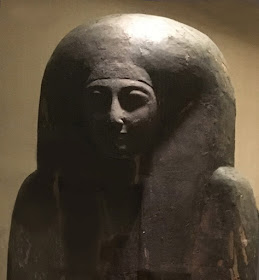Time magazine-- which was for decades the dominant news magazine in the world-- seems to be limping toward its end. It was purchased last year for a fraction of its former value and the new owners are dismantling and selling off the assets.
The cover of Time was the showcase for thousands of remarkable portraits painted by talented artists such as Boris Chaliapin and Ernest Hamlin Baker.
Time wanted its covers to convey an accurate, lucid magazine; it wasn't advertising creativity or imagination. So it commissioned careful illustrations that inspired confidence and integrity.
Week after week, decade after decade, these artists painted cover portraits with great integrity, sometimes on a 48 hour deadline. (Baker reported "permitting himself only two hours sleep out of the forty eight allowed for the job." Sometimes they worked to the last minute, cutting it so close they had to race in their car to meet a delivery date.)
The originals were about twice the size of the printed version. Here you can see how Baker achieved those subtle skin tones: over a light wash base, he applied highly diluted tempera paint, built up gradually with a thousand delicate brush strokes.
 |
| Baker went back with white paint to separate eyelashes he thought were too close together |
How in the world did Baker learn the face of his subject well enough to employ this approach? He'd take the reference photos supplied by the magazine-- perhaps a dozen random pictures from different angles-- and study them with a magnifying glass to compile a composite map of the topography of the face.
Baker would then use his topographic map as his guide when painting the lines and crevasses and warts of the face. That's a lot of work.
I would not say these covers are works of inspired genius. I've seen more beautiful designs. But in my opinion they are consistently works of excellence, and opportunities to be excellent are rare enough in this world that they should not be taken for granted.
If there was a shortcut that could've achieved the same result, I'm sure these artists would've been happy to take it, and to get back all those hours of their lives. For example, decades later computers could've saved these guys time. But regardless, I think artists should take comfort from the fact that time spent in pursuit of excellence is never wasted.





















